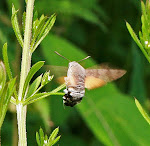A range of Coleoptera from tiger beetles to ladybirds has been photographed recently and some of these are now shown here.
Dune Tiger Beetle (Cicindela hybrida), Ainsdale dunes, Lancashire, September 6, 2012.
Only known in Britain from limited areas of the west Lancashire and Cumbrian coasts
Green Tiger Beetle (Cicindela campestris), Foulshaw Moss, Cumbria, September 20, 2011
Devil's Coach Horse (Ocypus olens) Silverdale, Lancashire, October 7, 2011
A burying beetle (Nicrophorus vespilloides, Brockholes Wetlands, Lancashire, August 31, 2011
Hazel Leaf Roller (Apoderus coryli) Silverdale, September 29, 2012
Alder leaf beetle (Agelastica alni), Brockholes Wetlands, October 8, 2012. This is currently the most northerly record in Britain
Blue Willow Beetle (Phratora vulgatissima), Brockholes Wetlands, October 8, 2012
A soldier beetle (Rhagonchya fulva), Brockholes Wetlands, July 10, 2011
A ground beetle (Pterostichus madidus), Latterbarrow, Cumbria, July 3, 2012
Green Nettle Weevil (Phyllobius pomaceus), Brockholes Wetlands, May 6, 2012
A leaf beetle (Chrysolina polita), Brockholes Wetlands, August 19,2011
Malachius coccineus, Nikoklea, Cyprus, April 22, 2012
A longhorn beetle (Leptura [Strangalia] maculata), Premanon, Jura, France, July 19, 2012
Water Ladybird (Anisosticta novemdecimpunctata), Brockholes Wetlands, September 9, 2011
Cream-spot Ladybird (Calvia quattuordecimguttata), Brockholes Wetlands, August 31, 2011
16-spot Ladybird (Tytthaspis sedecimpunctata), Eckington,Worcestershire, June 20, 2012
14-spot Ladybird (Propylea quattuordecimpunctata), Brockholes Wetlands, September 8, 2011
11-spot Ladybird (Coccinella undecimpunctata), Brockholes Wetlands, November 6, 2012
10-spot Ladybird (Adalia decempunctata), Brockholes Wetlands, August 30/September 2, 2011
.jpg)
.jpg)




.jpg)
.jpg)
+(Large).jpg)
.jpg)




.jpg)
.jpg)
.jpg)
.jpg)
.jpg)
.jpg)
.jpg)
.jpg)
.jpg)
.jpg)
.jpg)
.jpg)
.jpg)
.jpg)
.jpg)
.jpg)


.jpg)
.jpg)
.jpg)
.jpg)
.jpg)
.jpg)

.jpg)
.jpg)
.jpg)
.jpg)
.jpg)



.jpg)
.jpg)
.jpg)
.jpg)
.jpg)







